A Green Vista: The Integral Role of Biodiversity in Scenic Landscapes
Have you ever stood atop a hill, gazing at a breathtaking landscape, and felt a deep sense of connection to the world around you? That feeling, my friend, is largely thanks to biodiversity. This article explores how biodiversity enhances the beauty and functionality of landscapes, contributing to ecological balance, tourism, and cultural significance while providing essential ecosystem services. Biodiversity is not just a collection of different species; it's the very fabric that weaves together the tapestry of life on Earth.
Biodiversity is crucial for maintaining ecosystem health and resilience. It supports various life forms, ensuring stability and adaptability in landscapes, which in turn promotes a rich tapestry of natural beauty. Imagine a world where only a few types of plants and animals existed—how dull and lifeless it would be! Diverse ecosystems are like vibrant cities, bustling with activity and life. They provide habitats for countless species, each playing a unique role in maintaining the balance of nature.
Diverse landscapes provide essential ecological services, such as soil fertility, water purification, and climate regulation. These services are vital for sustaining both human life and the environment. For instance, healthy forests act like giant sponges, soaking up rainwater and releasing it slowly, thus preventing floods and maintaining water quality. In contrast, a landscape stripped of its biodiversity would struggle to perform these functions, leading to degraded environments and diminished quality of life.
Ecosystem services derived from biodiversity include pollination, pest control, and nutrient cycling. These services are fundamental for agriculture and natural ecosystems, highlighting the interconnectedness of life. Without pollinators, for example, many of the fruits and vegetables we enjoy would vanish from our plates. This interconnectedness is a reminder that every species, no matter how small, plays a critical role in the health of our planet.
Pollinators, such as bees and butterflies, play a vital role in maintaining biodiversity by facilitating plant reproduction. Their decline poses a significant threat to both ecosystems and food security. Imagine the world without honey or the vibrant colors of blooming flowers in your garden. Protecting these unsung heroes is essential for maintaining the beauty and functionality of our landscapes.
Healthy soils, enriched by diverse organisms, support plant growth and carbon storage. Biodiversity in soil ecosystems is essential for nutrient cycling and overall environmental health. Think of soil as a living organism; it breathes and thrives when it's diverse. The more diverse the soil life, the healthier the plants, and the more robust the ecosystem becomes.
Biodiversity enhances the aesthetic appeal of landscapes, attracting visitors and fostering a sense of connection to nature. This beauty contributes to mental well-being and cultural identity. When we see a thriving ecosystem, filled with a variety of plants and animals, it evokes feelings of joy and tranquility. These landscapes become places where memories are made, and connections with nature are deepened.
Tourism often relies on the natural beauty and diversity of landscapes. Protecting biodiversity is crucial for sustaining eco-tourism, which benefits local economies and conservation efforts. Tourists flock to areas rich in biodiversity, eager to experience the wonders of nature first-hand. This influx of visitors can provide essential funding for conservation projects, creating a positive feedback loop that benefits both the environment and local communities.
Wildlife tourism offers unique experiences driven by diverse species. This sector emphasizes the need for conservation, as healthy ecosystems attract visitors seeking authentic natural encounters. Imagine watching a majestic elephant roam freely in its habitat or witnessing a colorful bird in flight. These experiences remind us of the beauty and fragility of life on our planet.
Engaging local communities in biodiversity conservation fosters stewardship and ensures sustainable practices. Community-led initiatives can enhance both the ecological and economic value of scenic landscapes. When locals are involved in conservation efforts, they become champions for the environment, ensuring that future generations can enjoy the same natural wonders that we do today.
- What is biodiversity? Biodiversity refers to the variety of life forms on Earth, including the diversity of species, ecosystems, and genetic variations.
- Why is biodiversity important? Biodiversity is essential for ecosystem health, providing services that sustain life, such as clean air, water, and food.
- How can we protect biodiversity? We can protect biodiversity by supporting conservation efforts, reducing pollution, and promoting sustainable practices in our daily lives.
- What role does tourism play in biodiversity conservation? Tourism can provide funding for conservation projects and raise awareness about the importance of protecting natural ecosystems.
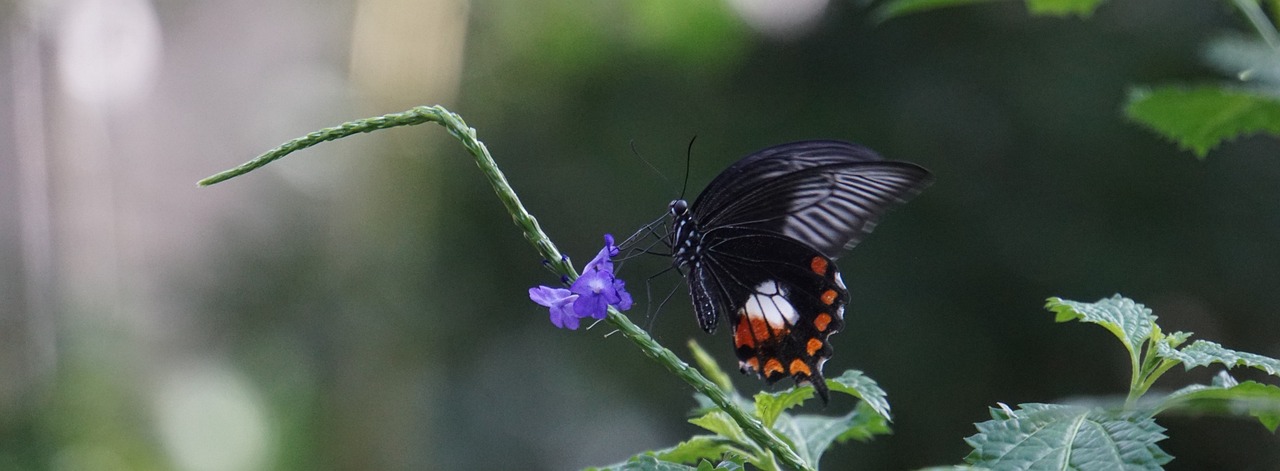
The Importance of Biodiversity
Biodiversity is not just a buzzword thrown around by environmentalists; it is the very fabric that holds our ecosystems together. Imagine a vibrant tapestry woven with countless threads, each representing a different species, habitat, or ecological function. This intricate web of life is what we call biodiversity, and its significance extends far beyond mere aesthetics. It is crucial for maintaining ecosystem health and resilience. A rich variety of life forms ensures stability and adaptability in landscapes, allowing them to thrive even in the face of environmental changes.
Think about it: every time you step into a lush forest or a blooming meadow, you're witnessing the result of millions of years of evolution and interdependence among species. Biodiversity supports various life forms, from the smallest microorganisms in the soil to the majestic trees reaching for the sky. This variety not only enhances our natural surroundings but also plays a vital role in the services that ecosystems provide. For instance, diverse ecosystems can better withstand diseases and pests, making them more resilient to disturbances.
Moreover, biodiversity contributes to a rich tapestry of natural beauty that captivates our senses and inspires creativity. Whether it’s the vibrant colors of a coral reef or the soothing sounds of a forest, these elements enrich our lives. But the importance of biodiversity goes beyond mere enjoyment; it also has significant implications for our survival. Ecosystems with high biodiversity can offer a range of resources, including food, clean water, and medicinal compounds, which are essential for human health and well-being.
In recognizing the importance of biodiversity, we must also consider the threats it faces. Habitat destruction, climate change, and pollution are just a few factors that can lead to a decline in biodiversity. This decline can create a domino effect, disrupting the delicate balance of ecosystems and compromising the services they provide. Therefore, protecting biodiversity is not just an environmental concern; it is a necessity for our own survival.
In summary, biodiversity is the cornerstone of healthy ecosystems. It supports a myriad of life forms, enhances ecological resilience, and provides essential services that sustain life on Earth. As stewards of our planet, it is our responsibility to protect and preserve this invaluable resource for future generations. By fostering a deeper understanding of biodiversity's importance, we can inspire action to safeguard our natural heritage.
- What is biodiversity? Biodiversity refers to the variety of life on Earth, including the different species, genetic variations, and ecosystems.
- Why is biodiversity important? It is vital for ecosystem health, resilience, and the services that sustain human life, such as clean air, water, and food.
- How does biodiversity affect tourism? Diverse landscapes attract tourists, which can boost local economies and promote conservation efforts.
- What are some threats to biodiversity? Major threats include habitat destruction, climate change, pollution, and invasive species.
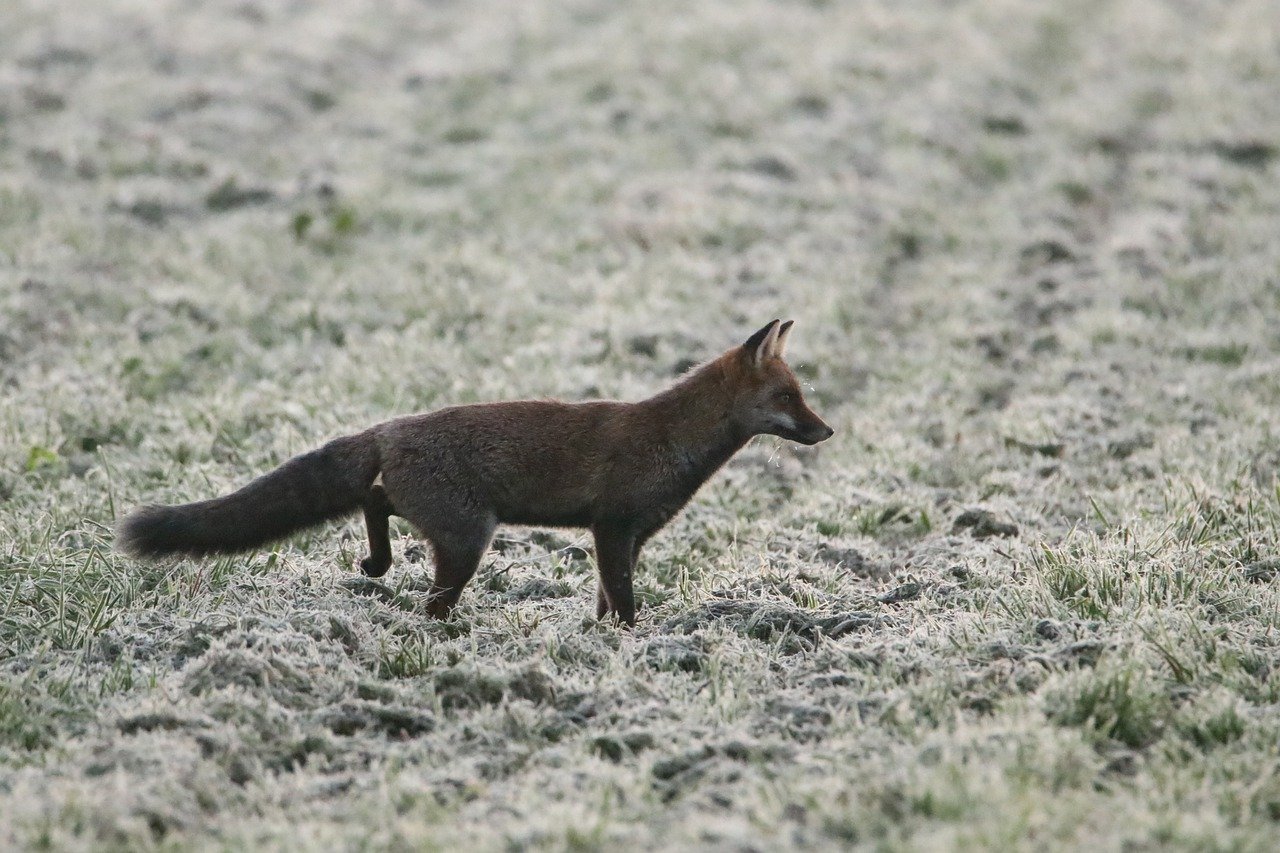
Ecological Benefits of Diverse Landscapes
Diverse landscapes are not just pretty to look at; they are the backbone of ecological health and functionality. Think of biodiversity as the intricate threads woven into the fabric of nature, creating a vibrant tapestry that supports life in all its forms. When we talk about ecological benefits, we’re diving into how these varied ecosystems contribute essential services that sustain both the environment and human life. The interplay of different species creates a resilient ecosystem capable of withstanding changes, be it climate shifts or human impacts.
One of the most significant benefits of diverse landscapes is their ability to regulate climate. Various plants and trees absorb carbon dioxide, acting as natural air filters. This process not only helps mitigate climate change but also contributes to local weather patterns. In addition, diverse ecosystems play a crucial role in water purification. Wetlands, for example, act as natural sponges, filtering pollutants and providing clean water for both wildlife and human consumption. It’s fascinating how nature has its own ways of maintaining balance without any human intervention!
Soil health is another critical area where biodiversity shines. Healthy soils, enriched with a variety of organisms, support plant growth and promote nutrient cycling. When different species co-exist, they contribute to a more structured soil environment, enhancing its fertility. This is essential for agriculture, where diverse crops can lead to improved yields and reduced need for chemical fertilizers. The relationship between soil organisms and plants is like a well-choreographed dance; when one partner thrives, so does the other.
Moreover, diverse landscapes provide habitats for a multitude of species, ensuring that ecosystems remain balanced. Each species, no matter how small, plays a role in maintaining this balance. For instance, predators control prey populations, while herbivores help shape plant communities. The loss of just one species can have a ripple effect, disrupting the entire ecosystem. In this way, biodiversity acts as a safety net, ensuring that ecosystems can adapt and thrive even when faced with challenges.
To illustrate the importance of these ecological benefits, consider the following table that summarizes essential ecosystem services provided by diverse landscapes:
| Ecosystem Service | Description | Importance |
|---|---|---|
| Soil Fertility | Enhances nutrient availability for plants | Crucial for agriculture and food security |
| Water Purification | Filters pollutants and provides clean water | Essential for human health and ecosystem sustainability |
| Climate Regulation | Absorbs carbon dioxide and regulates temperatures | Helps mitigate climate change effects |
| Habitat Provision | Offers shelter and food for various species | Supports biodiversity and ecosystem balance |
In conclusion, the ecological benefits of diverse landscapes are vast and interconnected. They provide not only the essentials for life but also contribute to the beauty and functionality of our world. By recognizing and valuing these benefits, we can take meaningful steps toward protecting and preserving our natural environments for future generations.
- What is biodiversity? Biodiversity refers to the variety of life in a particular habitat or ecosystem, encompassing different species of plants, animals, and microorganisms.
- Why is biodiversity important? Biodiversity is crucial for maintaining ecosystem health, providing essential services such as food production, clean water, and climate regulation.
- How does biodiversity affect tourism? Diverse landscapes attract tourists, contributing to local economies and promoting conservation efforts.
- What can individuals do to support biodiversity? Individuals can support biodiversity by participating in conservation efforts, reducing waste, and promoting sustainable practices in their communities.
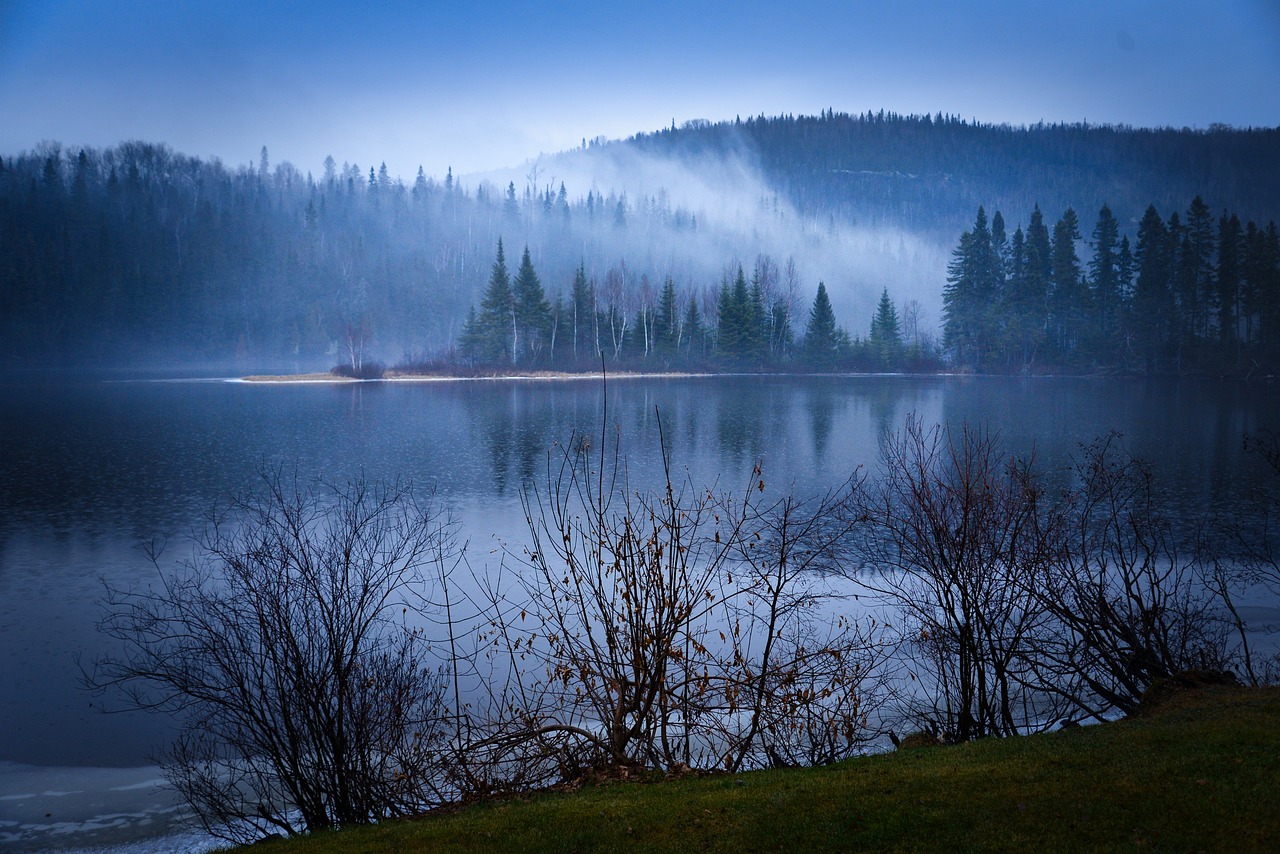
Biodiversity and Ecosystem Services
Biodiversity is not just a buzzword; it is the backbone of our planet's health and functionality. When we talk about biodiversity, we refer to the variety of life on Earth, from the tiniest microorganisms to the largest mammals. This rich tapestry of life plays a crucial role in providing ecosystem services—the benefits that nature offers us every day without us even realizing it. These services are vital for our survival and well-being, and they include a wide range of processes such as pollination, nutrient cycling, and water purification.
Imagine a world without bees. These little creatures are not just buzzing around; they are responsible for pollinating one-third of the food we consume. This is a perfect example of how interconnected life is. When biodiversity flourishes, so do the services that sustain our agriculture. For instance, the presence of diverse plant species can enhance nutrient cycling, which means that nutrients are recycled efficiently, enriching the soil and promoting healthy crop growth. Without this natural process, we'd be heavily reliant on artificial fertilizers, which can harm the environment.
Moreover, biodiversity contributes to water purification. Wetlands, for example, are rich in diverse plant and animal species that filter pollutants from water. They act like nature's kidneys, cleansing water before it reaches our rivers and lakes. This ecosystem service is essential, especially in urban areas where water quality can be compromised. In fact, studies show that areas with higher biodiversity tend to have better water quality, showcasing the importance of preserving our natural habitats.
But that's not all—biodiversity also plays a significant role in climate regulation. Forests, which are teeming with diverse species, act as carbon sinks, absorbing carbon dioxide from the atmosphere. This process is crucial in the fight against climate change. The more diverse the forest, the more resilient it is to diseases and pests, ensuring its longevity and ability to continue providing these essential services.
In summary, biodiversity is not just a collection of different species; it is a dynamic web of life that supports the ecosystem services we often take for granted. Protecting biodiversity means safeguarding these services, which are fundamental to our survival and the health of our planet. The interconnectedness of life is a beautiful reminder that every species, no matter how small, has a role to play in maintaining the delicate balance of our ecosystems.
- What are ecosystem services? Ecosystem services are the benefits that humans derive from natural ecosystems, including clean water, pollination, and climate regulation.
- Why is biodiversity important? Biodiversity is crucial for ecosystem health, resilience, and the provision of essential services that support life on Earth.
- How does biodiversity affect agriculture? Biodiversity enhances nutrient cycling, pest control, and pollination, all of which are vital for healthy crop production.
- What can I do to help protect biodiversity? You can help by supporting conservation efforts, reducing waste, and promoting sustainable practices in your community.
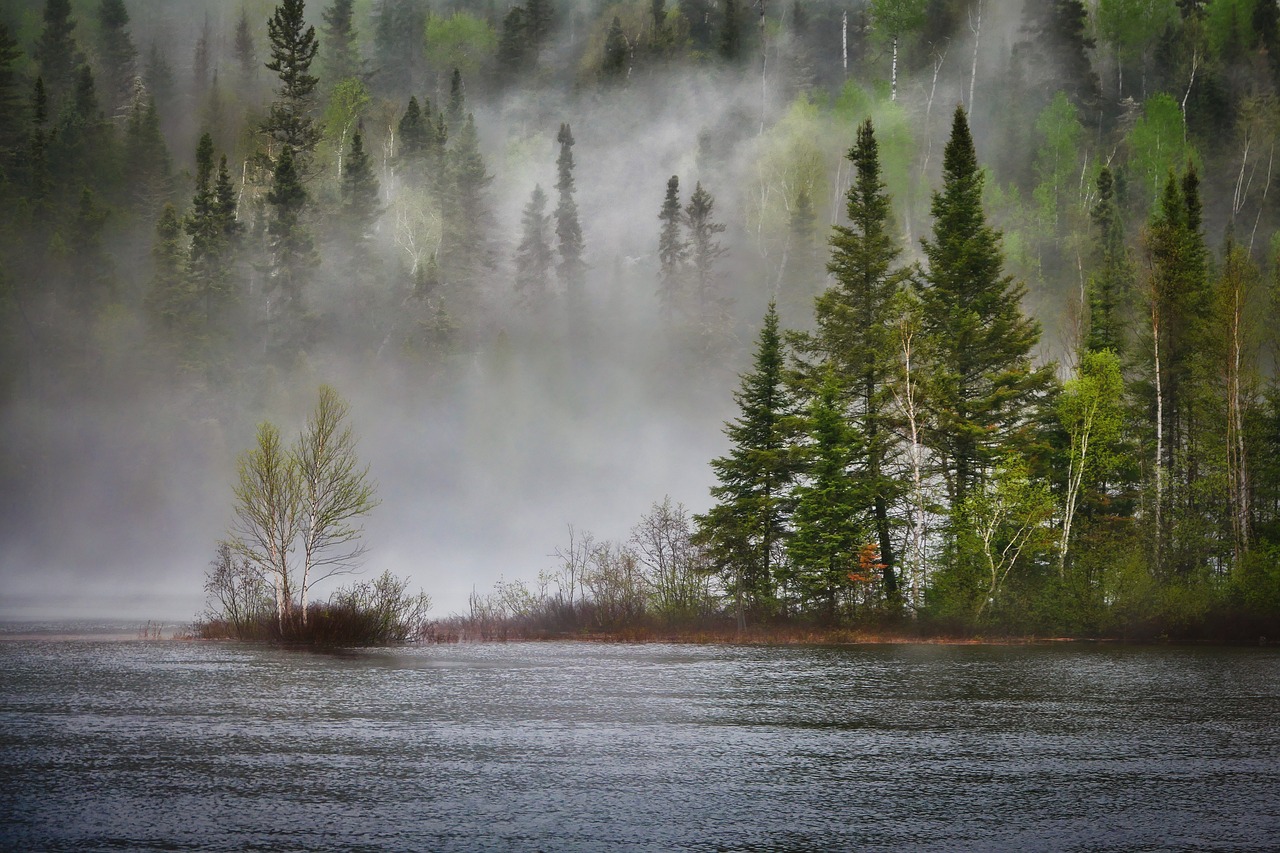
Pollinators: The Unsung Heroes
When we think about the intricate web of life that sustains our planet, it's easy to overlook the small but mighty pollinators. These remarkable creatures, including bees, butterflies, and even some birds, play a pivotal role in the reproduction of over 75% of the world's flowering plants. That's right! Without them, our landscapes would be a lot less colorful and vibrant. Imagine a world devoid of the sweet scent of blooming flowers or the taste of juicy fruits; it would be a rather dull existence, wouldn't it?
Pollinators are often referred to as the unsung heroes of our ecosystems. They work tirelessly, flitting from flower to flower, transferring pollen and ensuring that plants can produce seeds and fruits. This process is not just essential for the plants themselves but also for the countless animals and humans who depend on these plants for food and habitat. In fact, many of the crops we rely on—such as apples, almonds, and blueberries—are directly dependent on pollination. Without these industrious little workers, our food systems would face dire consequences.
However, the alarming decline in pollinator populations due to habitat loss, pesticide use, and climate change poses a significant threat to biodiversity and food security. Here are some key points to consider:
- Habitat Loss: Urbanization and agricultural expansion have drastically reduced the natural habitats that pollinators rely on.
- Pesticides: The use of harmful chemicals in farming practices can be detrimental to pollinator health, leading to population declines.
- Climate Change: Altered weather patterns can disrupt the timing of flowering plants and the life cycles of pollinators, making it difficult for them to synchronize.
To combat these challenges, it’s crucial to implement conservation strategies that protect pollinator habitats and promote biodiversity. Simple actions, such as planting native flowering plants, reducing pesticide use, and creating bee-friendly gardens, can make a significant difference. By fostering a healthy environment for pollinators, we not only support their survival but also enhance the beauty and functionality of our landscapes.
In conclusion, the importance of pollinators cannot be overstated. They are the backbone of our ecosystems, contributing to biodiversity and the health of our planet. As we continue to face environmental challenges, recognizing and protecting these unsung heroes is more important than ever. Let's celebrate their contributions and take action to ensure their survival for generations to come.
1. Why are pollinators important?
Pollinators are essential for the reproduction of many plants, including crops that humans rely on for food. They help maintain biodiversity and support healthy ecosystems.
2. What are the main threats to pollinators?
The primary threats to pollinators include habitat loss, pesticide exposure, climate change, and diseases.
3. How can I help protect pollinators?
You can help by planting native flowers, creating pollinator-friendly habitats, reducing pesticide use, and supporting local conservation efforts.
4. What types of animals are considered pollinators?
While bees are the most well-known pollinators, other animals such as butterflies, moths, birds, bats, and even some small mammals also play significant roles in pollination.

Soil Health and Biodiversity
Soil health is often an unsung hero in the grand narrative of biodiversity. When we think about vibrant ecosystems, we tend to envision lush forests or colorful coral reefs, but beneath our feet lies a complex world that is equally vital. Healthy soils, enriched by a plethora of diverse organisms, are the foundation of thriving landscapes. Just imagine soil as a bustling city, where each organism plays a crucial role in maintaining order and balance. From tiny microbes to earthworms, these inhabitants contribute to nutrient cycling, organic matter decomposition, and even water retention, making them indispensable in the fight against climate change.
The relationship between biodiversity and soil health can be likened to a well-orchestrated symphony. Each species, whether it’s a bacterium breaking down organic material or a fungus forming symbiotic relationships with plant roots, plays its part in creating harmony within the ecosystem. When biodiversity flourishes in the soil, it results in a more resilient environment capable of withstanding stressors like drought or disease. Conversely, a lack of biodiversity can lead to soil degradation, diminished fertility, and increased vulnerability to erosion.
Moreover, the benefits of healthy soils extend beyond just ecological stability; they also have profound implications for agriculture. Farmers who understand the importance of biodiversity in soil health can adopt practices that enhance the microbial community. These practices might include crop rotation, cover cropping, and reduced tillage. By fostering a diverse soil ecosystem, farmers can:
- Improve soil structure and aeration
- Enhance nutrient availability for crops
- Increase resilience against pests and diseases
As we navigate the challenges of food security and environmental sustainability, recognizing the role of biodiversity in soil health becomes increasingly crucial. It's not just about keeping the soil healthy; it’s about ensuring that the entire ecosystem thrives. The intricate web of life within the soil serves as a reminder that every organism, no matter how small, has a significant impact on the world around us.
In summary, soil health and biodiversity are inextricably linked. Protecting and enhancing biodiversity in our soils is essential for maintaining ecosystem functions, supporting agriculture, and ultimately, safeguarding our planet’s future. As stewards of the Earth, we must recognize that nurturing our soil is akin to nurturing life itself.
- What is biodiversity? Biodiversity refers to the variety of life forms on Earth, including the different species of plants, animals, and microorganisms, as well as the ecosystems they form.
- How does biodiversity affect soil health? Biodiversity in soil contributes to nutrient cycling, organic matter decomposition, and overall soil structure, which are critical for maintaining soil health and fertility.
- Why is soil health important for agriculture? Healthy soils support plant growth, improve crop yields, and enhance resilience against pests and diseases, making them essential for sustainable agriculture.
- What practices can enhance soil biodiversity? Practices such as crop rotation, cover cropping, and reduced tillage can foster a diverse soil ecosystem, leading to improved soil health.
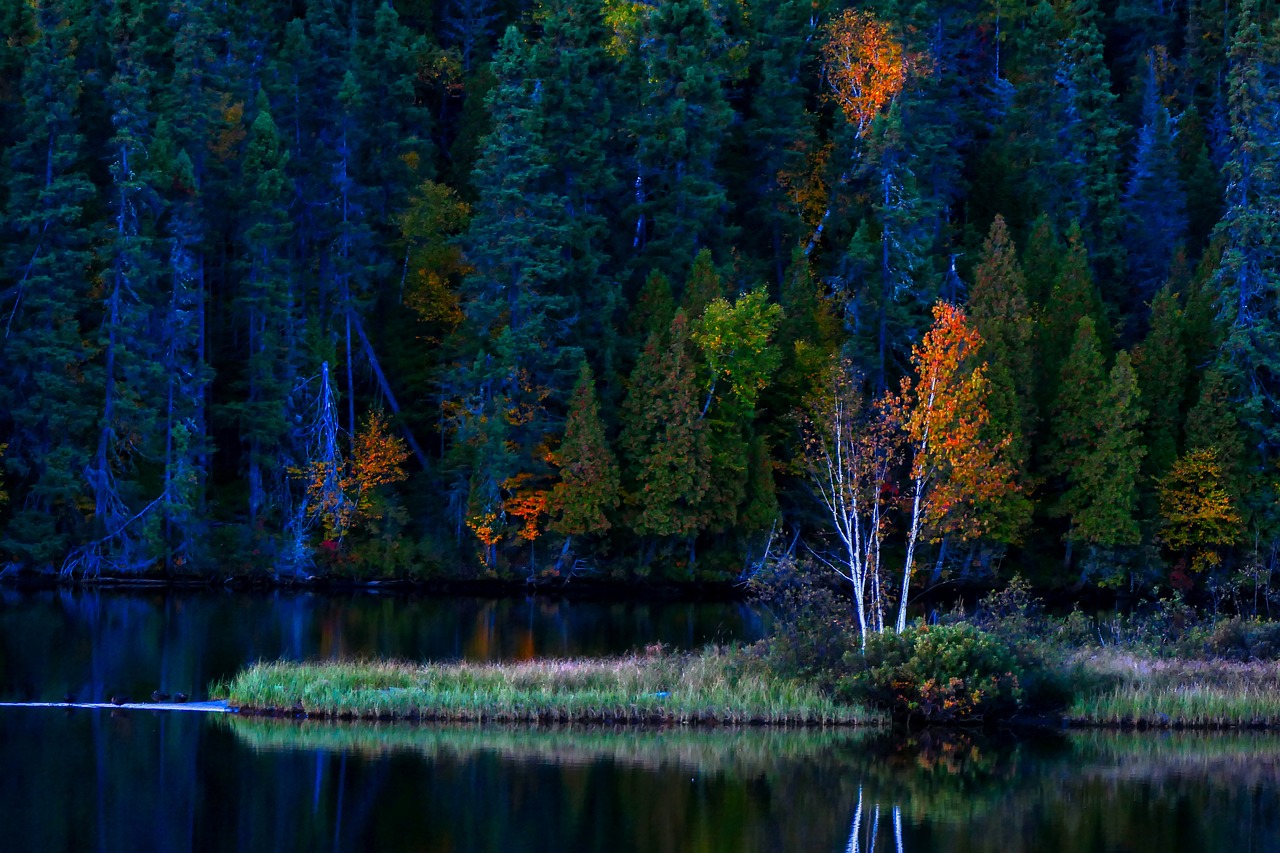
Impact on Aesthetic Value
Biodiversity is not just a scientific term; it is the very essence of what makes our landscapes breathtaking and vibrant. Imagine walking through a lush forest, where the vibrant colors of flowers dance in the sunlight, and the melodious sounds of birds create a symphony that fills the air. This is the magic of biodiversity at work! The variety of life forms, from towering trees to delicate wildflowers, contributes significantly to the aesthetic appeal of our natural environments. When we talk about scenic landscapes, we are essentially referring to a rich tapestry woven from countless species, each playing its part in enhancing beauty and interest.
The presence of diverse flora and fauna can transform an ordinary landscape into a stunning visual masterpiece. For instance, consider the striking contrast of a vibrant coral reef teeming with life against the backdrop of a tranquil blue ocean. Such diversity not only captivates our senses but also instills a profound sense of connection to nature. This connection fosters emotional well-being and encourages outdoor activities, leading to a healthier lifestyle. Isn't it fascinating how a simple walk in a biodiverse area can uplift your mood and provide a sense of peace?
Moreover, biodiversity plays a crucial role in cultural identity and heritage. Many communities around the world have deep-rooted traditions tied to their natural surroundings. The diverse species that inhabit these areas often hold significant cultural meanings, influencing art, folklore, and local customs. For example, the intricate patterns of a butterfly or the majestic flight of an eagle can inspire artistic expressions and storytelling. In this way, biodiversity not only enriches our landscapes but also nourishes our cultural narratives.
In addition to these emotional and cultural benefits, the aesthetic value of biodiversity has tangible economic implications. Areas known for their natural beauty attract tourists, which can significantly boost local economies. Tourists flock to see the vibrant wildflower meadows in spring or the colorful autumn foliage, drawn by the allure of diverse ecosystems. This influx of visitors can lead to job creation and increased funding for conservation efforts, ultimately benefiting both the environment and local communities.
To illustrate the impact of biodiversity on aesthetic value, consider the following table that highlights various elements of biodiversity and their contributions to scenic landscapes:
| Biodiversity Element | Aesthetic Contribution |
|---|---|
| Flora (Plants) | Colorful flowers and diverse plant life create visually stunning landscapes. |
| Fauna (Animals) | Wildlife adds movement and sound, enhancing the overall sensory experience. |
| Habitats (Ecosystems) | Varied ecosystems provide unique landscapes, from mountains to wetlands. |
| Seasonal Changes | Different seasons highlight various aspects of biodiversity, creating ever-changing beauty. |
In conclusion, the impact of biodiversity on aesthetic value cannot be overstated. It enriches our experiences, shapes our cultures, and provides economic opportunities, all while fostering a deeper connection to the natural world. So, the next time you find yourself surrounded by the beauty of nature, take a moment to appreciate the intricate web of life that makes it all possible. After all, biodiversity is not just about survival; it's about the joy and wonder it brings to our lives.
- What is biodiversity? Biodiversity refers to the variety of life forms on Earth, including different species of plants, animals, and microorganisms, as well as the ecosystems they form.
- Why is biodiversity important for aesthetic value? Biodiversity enhances the beauty of landscapes, providing vibrant colors, sounds, and textures that enrich our visual and emotional experiences.
- How does biodiversity contribute to tourism? Diverse ecosystems attract visitors seeking natural beauty and unique experiences, which supports local economies through eco-tourism.
- Can biodiversity affect mental health? Yes, spending time in biodiverse environments can improve mental well-being by reducing stress and promoting relaxation.
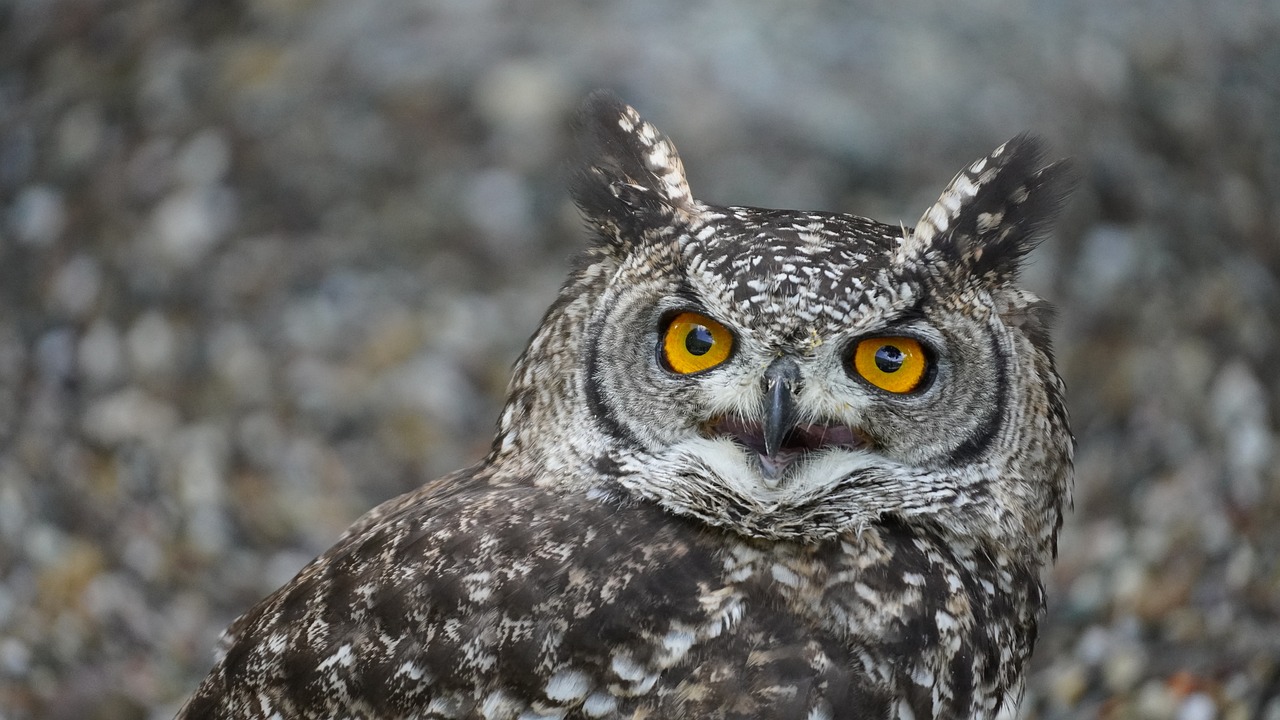
Biodiversity and Tourism
Biodiversity is not just a scientific term; it’s the heart and soul of our planet’s natural beauty, and it plays a pivotal role in the tourism industry. Imagine standing on a breathtaking cliff, gazing at a vibrant mosaic of colors from diverse flora and fauna. This stunning scenery attracts millions of travelers each year, eager to experience the unique ecosystems that our Earth has to offer. When we think about tourism, we often picture beautiful beaches, majestic mountains, and lush forests—all of which thrive due to their rich biodiversity.
Tourism often relies heavily on the allure of natural landscapes, which are enhanced by the variety of life they host. The connection between biodiversity and tourism is profound, as healthy ecosystems provide the backdrop for countless recreational activities, such as hiking, bird watching, and wildlife photography. Eco-tourism, a growing sector of the travel industry, emphasizes sustainable travel practices that minimize environmental impact while maximizing the appreciation of nature’s beauty.
Moreover, the economic benefits of biodiversity-driven tourism are significant. Local communities can thrive through eco-tourism by creating jobs and generating income. For instance, consider the following ways biodiversity contributes to tourism:
- Attracting Visitors: Unique ecosystems, such as coral reefs or rainforests, draw tourists who are eager to explore these natural wonders.
- Supporting Local Economies: Eco-tourism creates jobs in hospitality, guiding, and conservation, directly benefiting local communities.
- Promoting Conservation Efforts: Increased awareness and appreciation for biodiversity encourage visitors to participate in conservation initiatives.
However, this relationship is a double-edged sword. The very activities that promote tourism can also threaten biodiversity if not managed sustainably. Over-tourism can lead to habitat destruction, pollution, and the depletion of natural resources. Therefore, it’s crucial for stakeholders—governments, businesses, and local communities—to work together to implement sustainable practices that protect these invaluable ecosystems.
One effective approach is the establishment of protected areas and national parks, which not only safeguard biodiversity but also create a sanctuary for tourists seeking authentic experiences. These areas can serve as models for sustainable tourism, where visitors can enjoy nature while contributing to conservation efforts. Additionally, educational programs that inform tourists about the importance of biodiversity can foster a deeper connection and commitment to preserving these landscapes.
In conclusion, biodiversity and tourism are intricately linked, with each influencing the other. By prioritizing the health of our ecosystems, we can ensure that future generations will continue to enjoy the beauty and benefits that biodiversity brings to our landscapes. The challenge lies in finding a balance that allows for sustainable tourism practices while protecting the very resources that make our world so enchanting.
| Question | Answer |
|---|---|
| What is eco-tourism? | Eco-tourism is a responsible travel approach that focuses on visiting natural areas while conserving the environment and improving the well-being of local communities. |
| How does biodiversity impact tourism? | Biodiversity enhances the aesthetic and experiential value of natural landscapes, attracting tourists and providing essential ecosystem services that support tourism activities. |
| What can travelers do to support biodiversity? | Travelers can support biodiversity by choosing eco-friendly tours, respecting wildlife, minimizing waste, and participating in conservation efforts during their travels. |
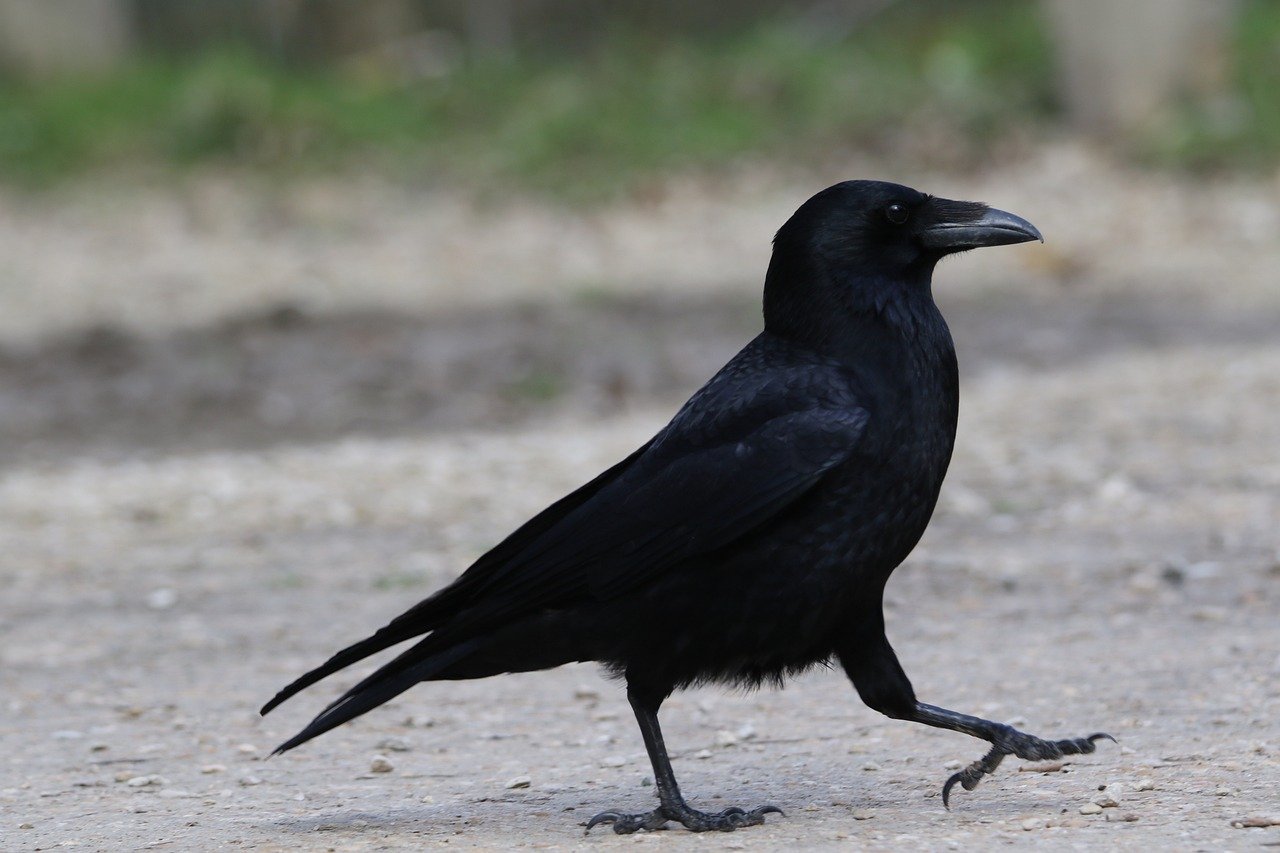
Wildlife Tourism
Wildlife tourism is not just a trend; it's a thriving sector that breathes life into local economies while simultaneously promoting the conservation of our planet's rich biodiversity. Imagine standing on a sunlit savanna, the air filled with the sounds of nature, as you witness a herd of elephants gracefully moving through the tall grasses. This is more than just a vacation; it's an experience that connects us to the wild, reminding us of the beauty that exists beyond our urban landscapes.
The allure of wildlife tourism lies in its ability to offer unique encounters with diverse species in their natural habitats. Tourists flock to national parks and reserves, eager to catch a glimpse of majestic lions, playful dolphins, or vibrant tropical birds. However, this fascination comes with a responsibility. As visitors, we must recognize that our presence can have profound impacts on these ecosystems. Sustainable practices are essential to ensure that we do not disrupt the very environments we cherish.
Moreover, wildlife tourism serves as a powerful tool for conservation efforts. The revenue generated from tourism can fund vital conservation programs, helping to protect endangered species and restore their habitats. For instance, many countries have established wildlife reserves where entrance fees contribute directly to conservation initiatives. This creates a win-win scenario: tourists enjoy unparalleled experiences, while local wildlife benefits from the funds raised.
However, not all wildlife tourism is created equal. There are ethical considerations that must be addressed. Responsible tourism practices emphasize the importance of minimizing our footprint and respecting wildlife. Tour operators are increasingly adopting guidelines that prioritize the well-being of animals, ensuring that their activities do not interfere with natural behaviors. Tourists are encouraged to choose operators who follow sustainable practices and contribute positively to conservation efforts.
In addition to the ecological benefits, wildlife tourism fosters a sense of community among travelers and locals alike. When tourists engage with local cultures, they learn about traditional conservation methods and the deep-rooted connections communities have with their surrounding environments. This cultural exchange enriches the travel experience and enhances the understanding of biodiversity's role in our world.
To illustrate the impact of wildlife tourism, consider the following table that highlights the economic benefits associated with various wildlife tourism activities:
| Wildlife Tourism Activity | Economic Impact (USD) | Conservation Contribution |
|---|---|---|
| Safari Tours | $1.2 billion | Funds anti-poaching efforts |
| Bird Watching | $500 million | Supports habitat restoration |
| Diving with Marine Life | $800 million | Promotes marine conservation |
As we navigate the complexities of wildlife tourism, one thing becomes clear: it is a powerful force for good when managed responsibly. By prioritizing conservation and sustainability, we can ensure that future generations will also have the opportunity to experience the wonders of wildlife in their natural habitats. So, the next time you plan a getaway, consider the impact of your choices. Will you choose to support wildlife tourism that respects and protects the beautiful landscapes and creatures that share our planet?
- What is wildlife tourism? Wildlife tourism refers to travel that focuses on observing and interacting with animals in their natural environments.
- How does wildlife tourism contribute to conservation? Revenue from wildlife tourism can fund conservation projects, protect endangered species, and support habitat restoration.
- What are sustainable practices in wildlife tourism? Sustainable practices include minimizing environmental impact, respecting wildlife, and supporting local communities.
- Why is ethical wildlife tourism important? Ethical wildlife tourism ensures that animal welfare is prioritized and that tourism activities do not disrupt natural behaviors.
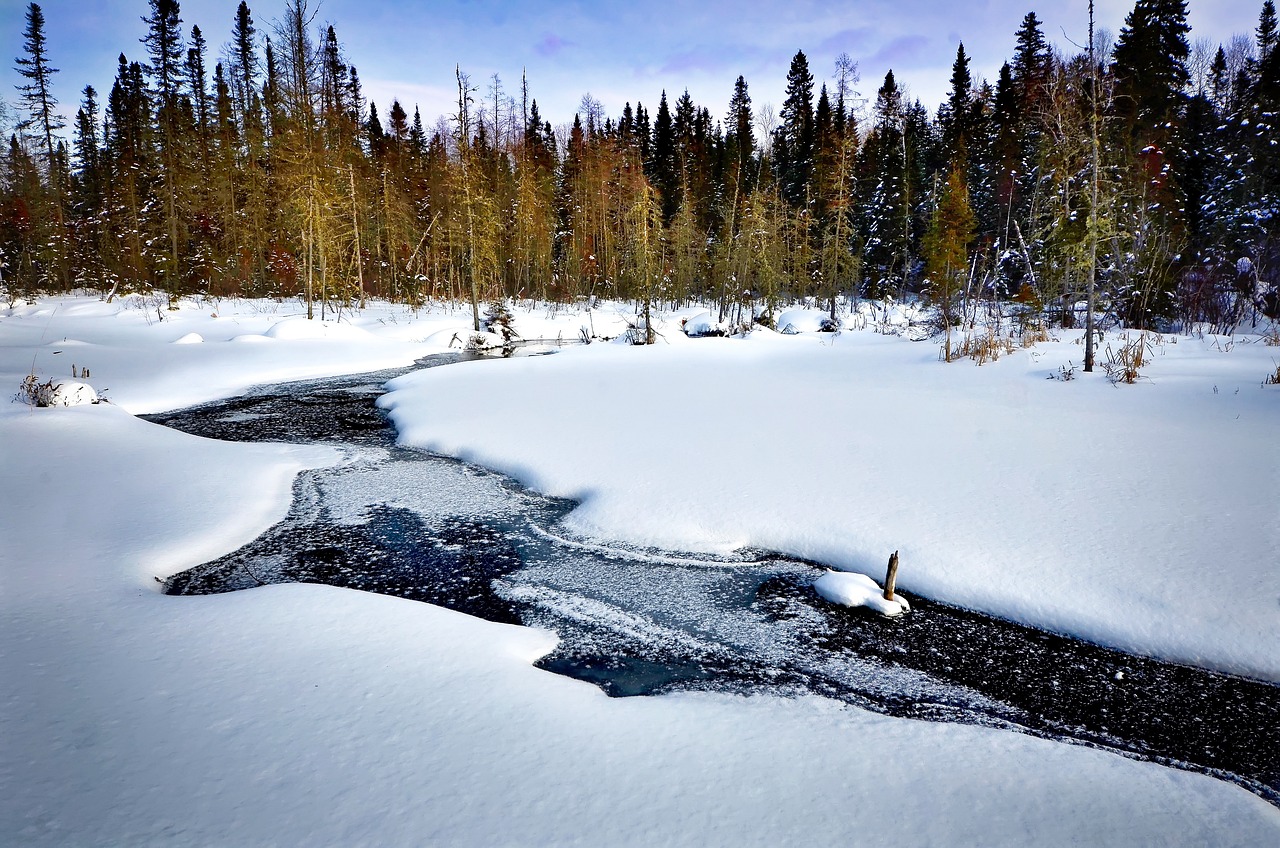
Community Involvement in Conservation
Community involvement in conservation is not just a buzzword; it's a vital element in preserving our planet's biodiversity. When local communities take an active role in protecting their natural surroundings, they not only enhance the ecological health of their landscapes but also foster a profound sense of ownership and pride. Imagine a neighborhood coming together to restore a local park or a group of farmers implementing sustainable practices to protect surrounding wildlife. These grassroots efforts are crucial in creating a sustainable future.
Engaging communities in conservation can take many forms. For instance, educational programs that inform residents about local flora and fauna can ignite a passion for preservation. Workshops on sustainable farming or gardening practices can empower individuals to make environmentally friendly choices. When people understand the impact of their actions on biodiversity, they are more likely to engage in conservation efforts. This connection between education and action is essential for long-term success.
Moreover, community-led initiatives can be incredibly effective. Here are a few examples of how communities can contribute:
- Local Clean-up Drives: Organizing events to clean up parks, rivers, and beaches can significantly impact local ecosystems.
- Planting Trees and Native Plants: This not only beautifies the area but also provides habitats for local wildlife.
- Wildlife Monitoring Programs: Communities can participate in citizen science projects that track species populations and health, contributing valuable data for conservation efforts.
Additionally, community involvement often leads to economic benefits. Eco-tourism can thrive in areas where locals are invested in preserving their natural resources. By showcasing their unique landscapes and wildlife, communities can attract visitors who are eager to experience the beauty of nature firsthand. This influx of tourism can provide significant economic boosts while simultaneously promoting conservation.
Ultimately, fostering a culture of conservation within communities creates a ripple effect. When individuals see their neighbors participating in environmental stewardship, they are more likely to join in. This collective effort can lead to stronger advocacy for policies that protect natural spaces and biodiversity. In essence, community involvement transforms conservation from a solitary endeavor into a shared mission, enhancing both the ecological and economic value of scenic landscapes.
Q: Why is community involvement important in conservation?
A: Community involvement is crucial because it fosters a sense of ownership and responsibility towards local ecosystems, leading to more effective and sustainable conservation practices.
Q: How can I get involved in local conservation efforts?
A: You can participate by joining local conservation groups, volunteering for clean-up events, or advocating for policies that protect natural resources in your area.
Q: What are the benefits of engaging in conservation activities?
A: Engaging in conservation activities can enhance your community's natural beauty, improve local ecosystems, provide educational opportunities, and contribute to economic growth through eco-tourism.
Frequently Asked Questions
- What is biodiversity and why is it important?
Biodiversity refers to the variety of life forms in a given ecosystem, including plants, animals, fungi, and microorganisms. It's crucial because it helps maintain ecosystem health and resilience, ensuring that natural systems can adapt to changes and continue to function effectively. Think of it as the foundation of a house; without it, everything else would collapse.
- How does biodiversity contribute to ecological services?
Biodiversity enhances ecological services like soil fertility, water purification, and climate regulation. These services are essential for sustaining human life and the environment. For example, diverse plant species can improve soil health, while a variety of organisms in water bodies can help filter pollutants, making our ecosystems more robust and resilient.
- What role do pollinators play in biodiversity?
Pollinators, including bees and butterflies, are vital for the reproduction of many flowering plants. They help facilitate the process of pollination, which is essential for producing fruits and seeds. Without them, we'd face significant challenges in food production and ecosystem balance, making them the unsung heroes of our natural world.
- How does biodiversity impact tourism?
Biodiversity is a major draw for tourists, particularly in eco-tourism, where people seek to experience the beauty and diversity of natural landscapes. Protecting these ecosystems not only benefits conservation efforts but also supports local economies by attracting visitors who are eager to explore unique wildlife and scenic spots.
- What can local communities do to help conserve biodiversity?
Local communities play a crucial role in biodiversity conservation. Engaging them in stewardship initiatives fosters a sense of ownership and responsibility. Community-led projects can enhance both ecological health and economic opportunities, ensuring that sustainable practices are implemented for future generations.



















